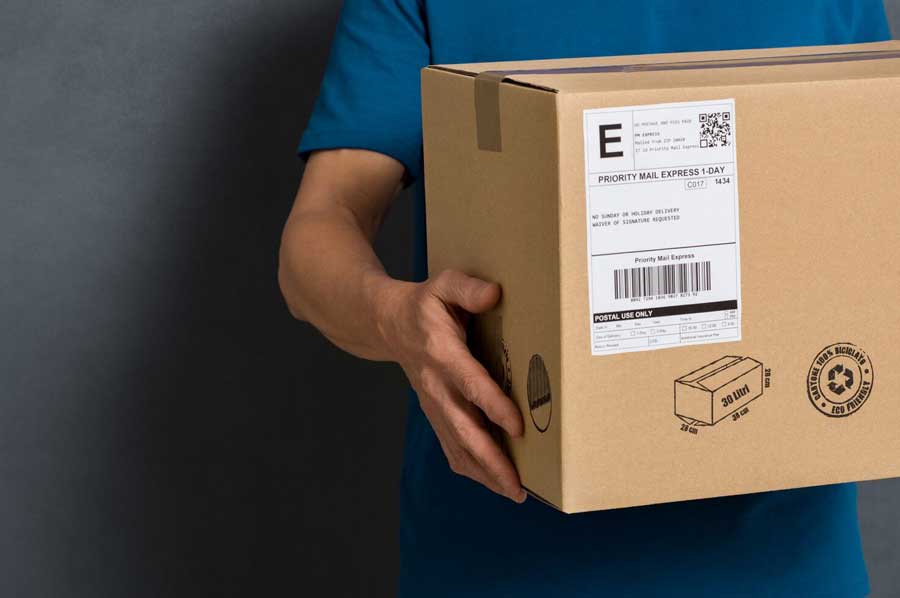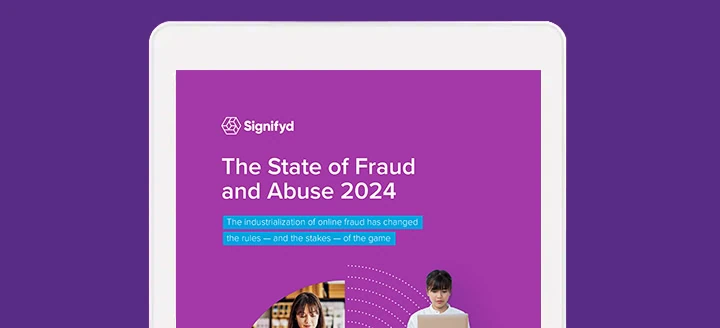Signifyd Education
Fraud 101: Complete Guide for the Online Merchant

Why is my business experiencing fraud?
-
It’s one of life’s ironies. You work hard to make your online business more visible and just when you’re getting some traction — the fraudsters appear. The combination of advertising campaigns, a rising search engine ranking, and the youth of a store (and perceived inexperience with detecting fraud), make an online merchant an ideal target…

Chargebacks: The different types and what they mean
-
What is a chargeback? Types of chargebacks Ramifications for merchants What is a chargeback? In the U.S., a cardholder has the right to request a refund from their issuing bank for any transaction or purchase made with their credit card. Specifically, under Regulation Z within The Truth in Lending Act, which covers credit cards, and Regulation E…

An in-depth look at the chargeback process + tips for avoiding repeat chargebacks
-
Navigating the chargeback for goods not received process is a painful undertaking for any merchant. When a customer disputes an order and files a chargeback, the merchant has an opportunity to contest that dispute. In order to dispute a chargeback and ultimately win, a merchant needs to participate in a series of defined steps created…

Understanding Merchant Liability in Credit Card and Payment Fraud
-
Who pays for credit card fraud? When is an ecommerce merchant liable? When a merchant starts accepting online orders, they’ve officially entered the card not present world. To a consumer, the decision between purchasing online or in-store is simply a calculation of convenience, price and availability. To a merchant however, a purchase online versus in-store are two…

How to review an order
-
Any fraud analyst will be quick to note that fraud review and detection is as much an art as it is a science. Order review, the most basic facet of an analyst’s role, is often a multistage process. It is performed in tandem with tools like machine learning algorithms, and complemented by the analyst’s own…

What is an AVS check? How verification works and what a match means for merchants
-
One of the most widely used fraud prevention tools in card-not-present transactions is the Address Verification Service, or AVS. Originally developed for use with mail and catalog orders, AVS is now commonly used by e-tailers, and other card-not-present merchants, as a method to verify the validity of an order they receive. An AVS check compares the billing…

What is friendly fraud? Here’s how to spot it and prevent it
-
Article updated: May 23, 2024 The primary goal for risk analysts is to detect and prevent fraudulent online transactions from being fulfilled while ensuring that the maximum number of legitimate orders are successfully filled. To do that, an analyst needs to determine whether the order was placed by the authorized cardholder or a fraudster who’s…

A comprehensive guide to payment fraud prevention for merchants
-
Navigating the minefield of ecommerce and online transactions can often feel like playing a game of Whac-a-Mole. Just as you think you’ve sorted out one problem, another pops up. One challenge that never fails to resurface, however, is payment fraud. Written with GPT-3.5. Reviewed, revised and approved by Signifyd humans. As merchants scale up, the…

A merchant’s complete guide to chargeback fraud
-
With this article, we hope to provide insights into chargeback fraud, and empower you to safeguard your business's finances and reputation. By decoding the complexities of chargeback fraud, you'll be better equipped to challenge fraudulent disputes, fortify your prevention strategies, and maintain healthier relationships with banks and payment processors.

What is online fraud and how does it work? Understanding the causes and mechanisms of internet frauds
-
How does online fraud work? Experiencing fraud is an inevitable aspect for businesses operating online, particularly when exploring how online frauds work. Every ecommerce company encounters fraud at some point, often questioning how such online fraud can take place. It’s often when that first merchant chargeback arrives that merchants become fully aware of the fraud…

AVS mismatch- What to do when the billing address and shipping address do not match
-
Billing address vs shipping address – the age-old dilemma. A common data point that merchants should examine before accepting or declining a purchase is a billing and shipping mismatch or avs mismatch. The reason may be simple (the order is a gift) or could point to something more (the credit card number is stolen). What…

What is Strong Customer Authentication?
-
What is Strong Customer Authentication (SCA)? Strong Customer Authentication (SCA) is a European regulatory framework that describes three types of information that should be reviewed as part of an online payment transaction to increase security and reduce fraud. To accept ecommerce payments once PSD2’s obligations go into effect, merchants will need to build authentication technologies…

What is PSD2?
-
Revised Payment Directive 2 (PSD2) overview As of 14 September 2019, the European Economic Area faces new regulatory obligations for authenticating online payments. Part of the second Payment Services Directive (PSD2), the core of these obligations is referred to as Strong Customer Authentication (SCA) and has a stated objective of “ensuring that payments across the EU…

What is 3D Secure (3DS)
-
3-D Secure Summary The 3-D Secure protocol—bundled into services by card brands like Visa Secure, Mastercard Identity Check or American Express SafeKey— is based on a three-domain model where the acquiring bank and issuing bank are connected by the protocol for the purpose of authenticating a cardholder during an ecommerce transaction. The protocol was developed…







